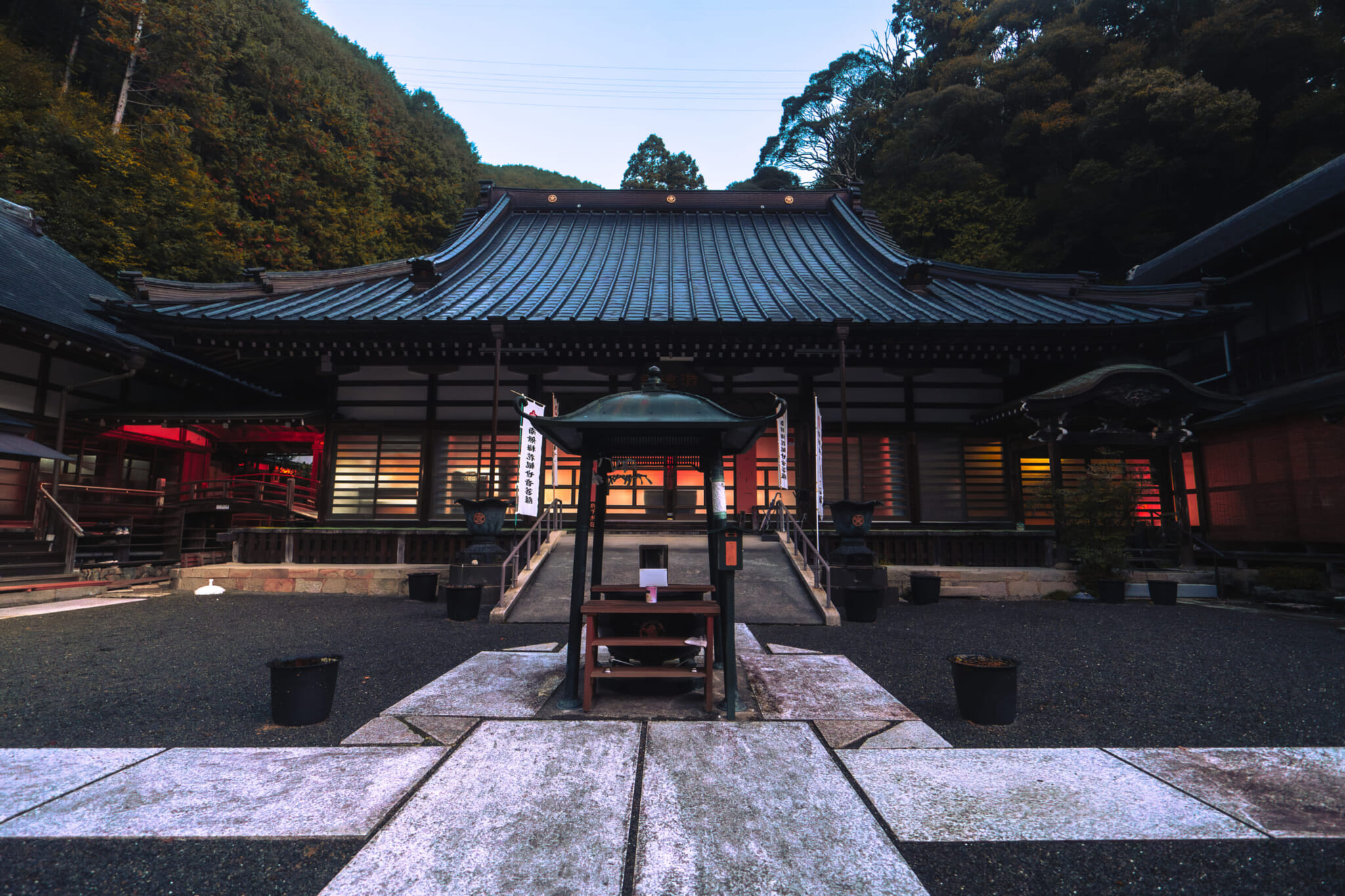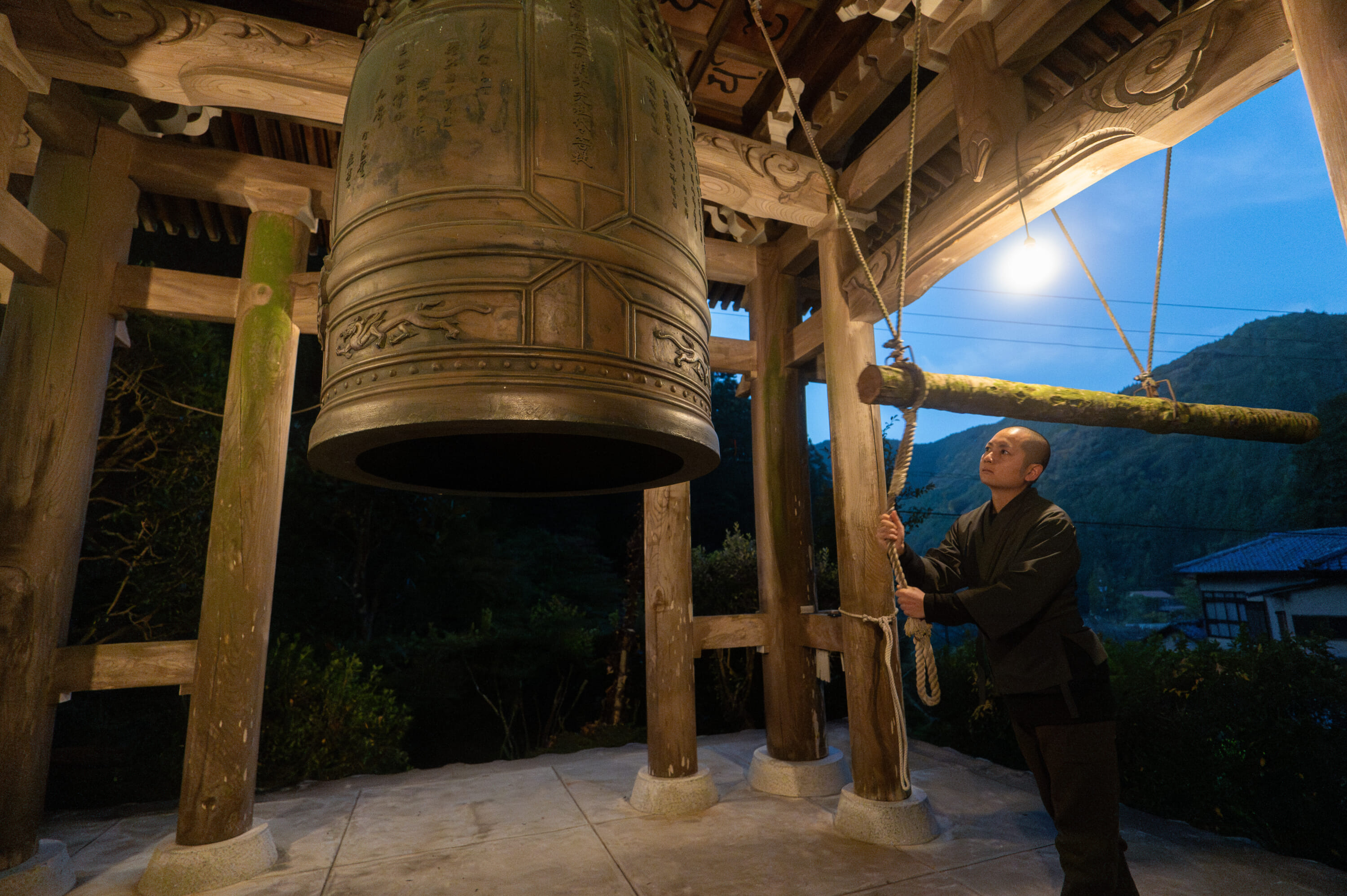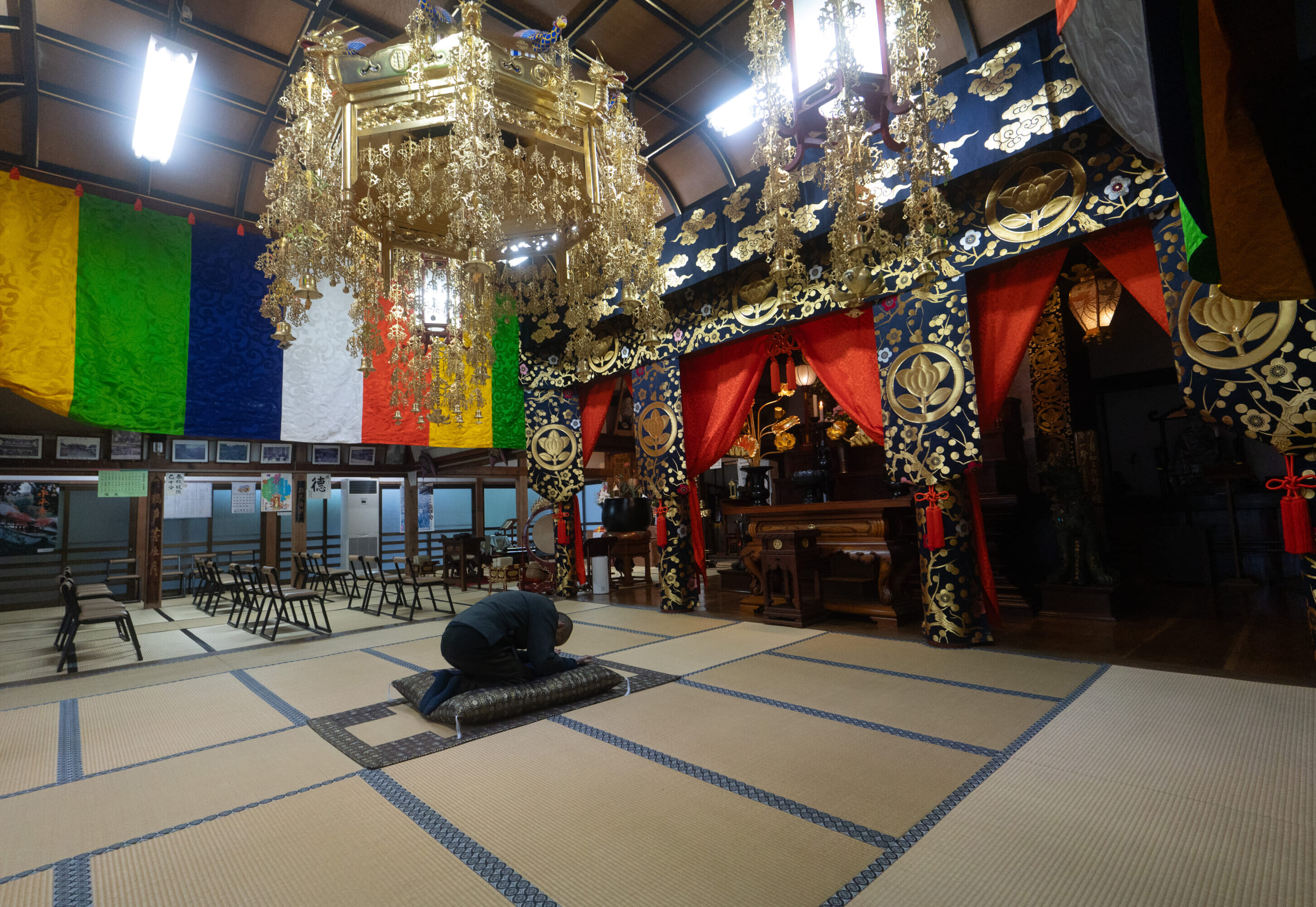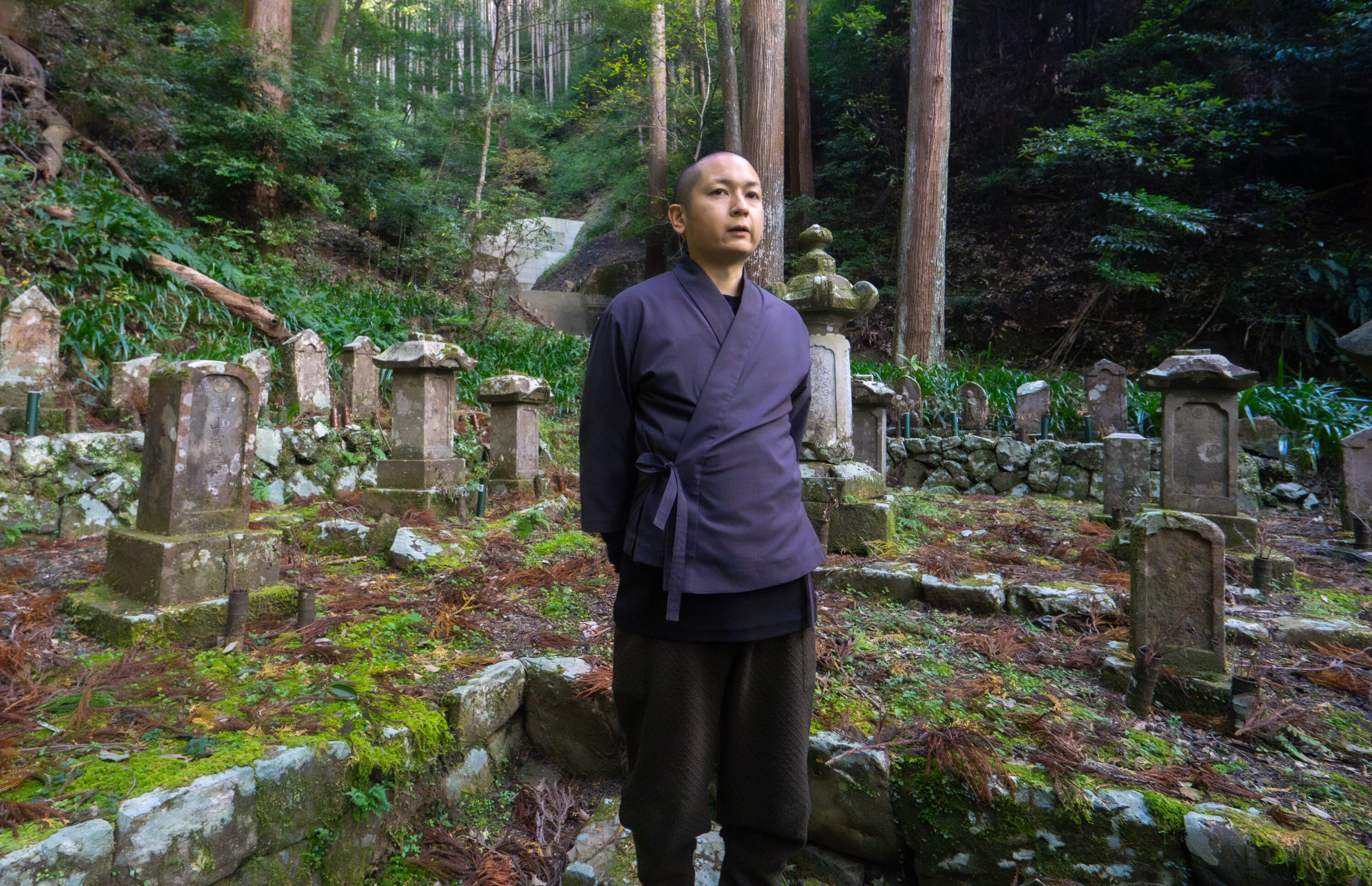For many, visiting a temple in Japan offers a chance at spiritual relaxation. Usually surrounded by nature, the markings of a great temple often include crisp, clean air, the sound of water flowing in the distance and the smell of incense faintly burning. Tokei-in Temple, located in Shizuoka Prefecture, has all these delights for your senses in its tranquil location. To get a first-hand experience of living in a Japanese temple, I stayed overnight and performed some of the strict practices of the Buddhist monks that call these places home.
Starting the Day with Zazen
Zazen, or seated Zen meditation, is one of the most important foundations of Soto Buddhism, the largest sect of modern Japanese Buddhism. Zazen at Tokei-in Temple begins at 6 a.m. with the striking of the giant bell outside to awaken one’s senses and announce the start of practice. Within the Zazen room, participants silently bow to the shrine in the middle of the room before bowing to their seat and those around them.
After taking up position on the small meditation pillow, the aim is to let your mind flow, without stopping to focus on any of the distractions of your thoughts or the world around you. Granted, even if you are able to pull off the full lotus pose (kekkahuza), with both feet tucked onto your thighs, tranquility is difficult when your legs begin to ache with pain. Those that slack off in their posture or fall to drowsiness can ask for a swift strike from a wooden stick to wake you back up. After being struck, you are required to bow to the person for their kindness in helping you recover your focus.
Despite the pain of Zazen, I did find myself at greater peace once it ended. Although it could have just been the relief of finally untying my legs from the Zazen seating position.
Paying Respects to Ancestors
After morning Zen meditation, prayers occur in the main hall. Head monk Sogen recites prayers as chants to the main deity enshrined at the temple, the thousand-armed, thousand-eyed Kanzeon Bodhisattva.
Once morning prayers were finished, we were led down a hidden path behind the main temple into a quiet forest. This is the final resting place of the previous Tokei-in Temple monks. Among those buried are the temple’s founder as well as Sogen’s grandfather and great-grandfather. His great-grandfather was at one time the head monk of Soto Buddhism’s main Japanese temple, Eiheiji Temple in Fukui Prefecture. The mossy, ancient graves behind Tokei-in make it easy to feel the rich history of the area, which dates back nearly 500 years, to when the temple was founded.
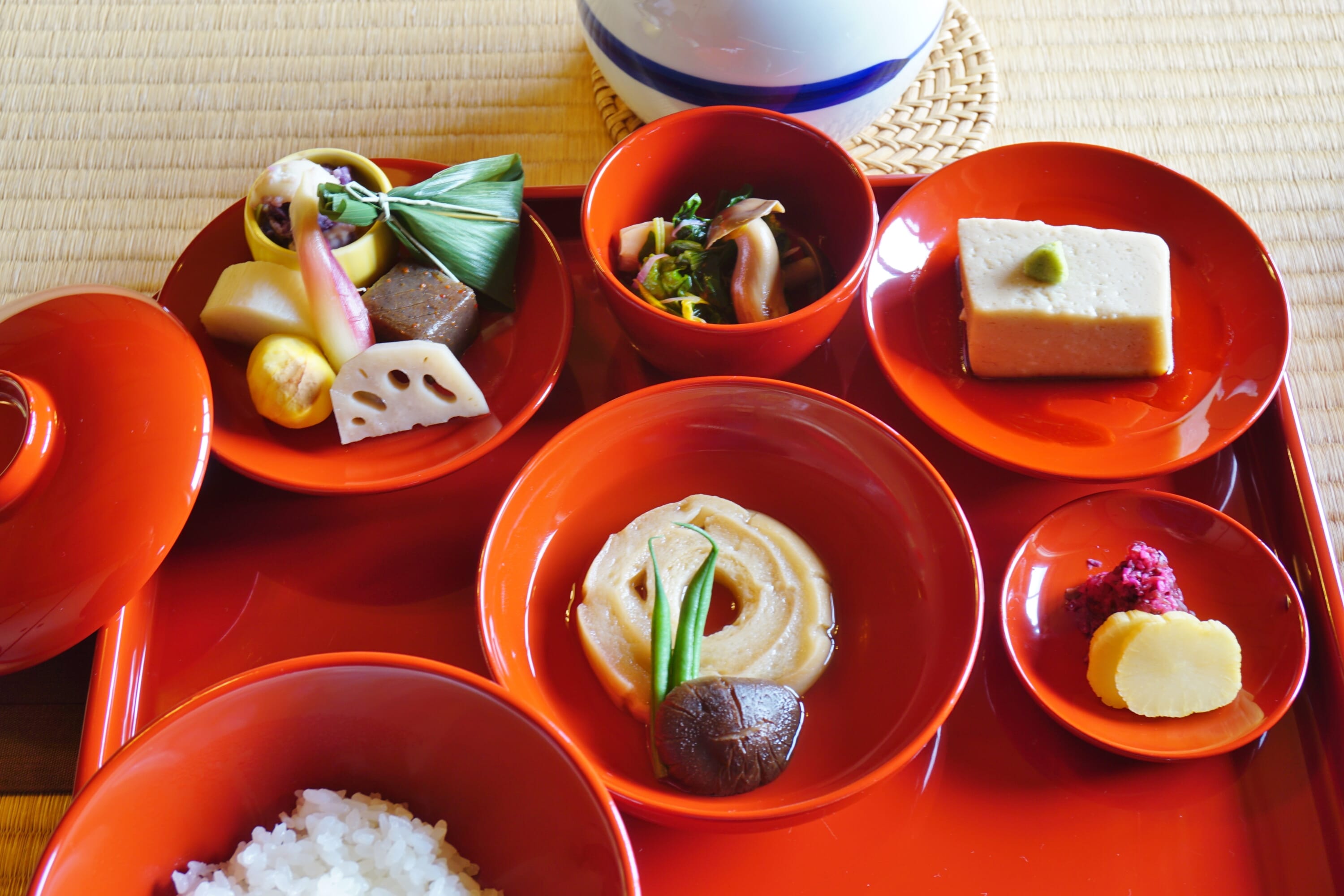
A traditional spread for the vegan diet of a Buddhist monk, known as shoujin ryouri
Shojin-Ryori: Eating Like a Monk
A traditional diet of a Buddhist monk is known as shojin ryori and is completely vegan. The act of killing and eating living beings is not allowed, so all food is prepared using various vegetables, fruits, tofu and rice dishes. While it may not be the ideal diet choice for self-proclaimed “carnivores,” shojin ryori offers an interesting way to taste local Japanese cuisine through unique styles while also deepening one’s connection to nature.
However, not all monks follow this strict diet for life. While it is commonly practiced for those undergoing training, one monk at Tokei-in informed us that he does partake in fish and meat dishes occasionally, but only after sufficiently praying over the slaughtered animal.
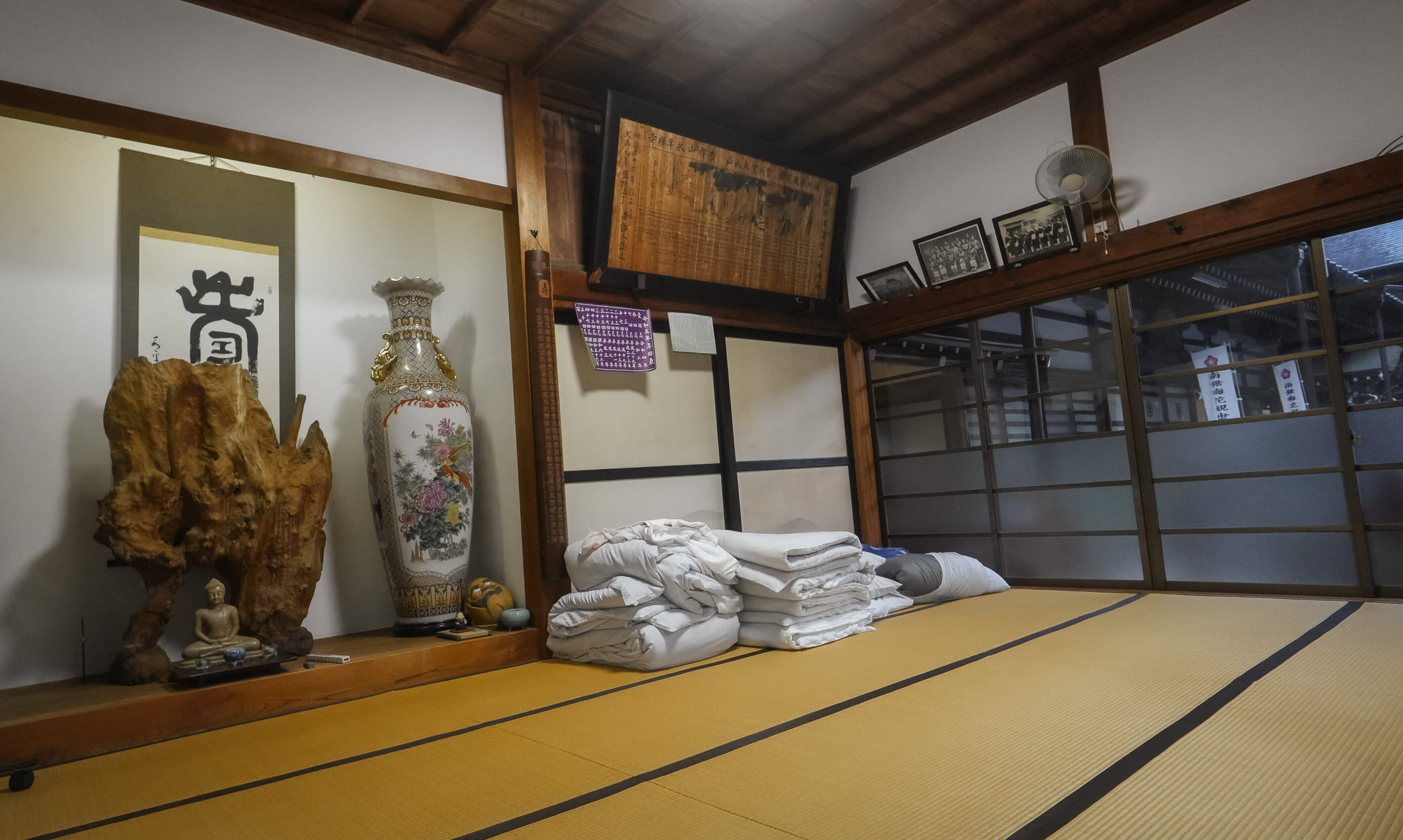
Futons and tatami mats were provided in the Shuryo, a previous training hall for monks
Sleeping Accommodation at the Temple
Surrounded by mountains on all sides, night comes early at Tokei-in Temple. Sleeping took place at the Shuryo, a former Zen monk training dojo lined with tatami mat-floors and decorated with old black and white pictures of monks of past generations. The firm tatami floors paired with the surrounding Zen ornaments made for a cozy place to rest following a long day. After lighting a relaxing incense and settling into my futon, a full night’s rest was all but assured.
Tokei-in Temple Information and Location
While Tokei-in Temple’s overnight excursion is not quite yet available to the public, visitors to the temple are more than welcome. Events and festivals are often held at the temple and are updated through their Instagram page.
| Location | Tokei-in Temple |
| More Info |
Website →
0542789724 |

